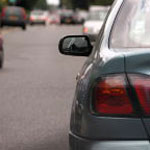 The FBT year runs from 1 April to 31 March. FBT is one of those areas that many employers struggle with; not because the tax is complex but because of the level of detail required to fulfil your obligations.
The FBT year runs from 1 April to 31 March. FBT is one of those areas that many employers struggle with; not because the tax is complex but because of the level of detail required to fulfil your obligations.
How do I know if I need to pay FBT?
Here are some key questions you should ask yourself:
- Do you make vehicles owned by the business available to employees for their personal use?
- Do you provide loans at reduced interest rates to employees?
- Have you released an employee from a debt they owed?
- Have you paid for, or reimbursed, an expense incurred by an employee?
- Do you provide a house or unit of accommodation to your employees?
- Do you provide employees allowances for living away from home?
- Do you provide entertainment – food, drink or a form of recreation – to your employees?
- Do any of your employees have a salary package arrangement in place?
- Have you provided your employees with goods at a lower price than they are normally sold to the public?
Answer ‘yes’ to any of these and you are likely to be caught by FBT.
8 Hot FBT Tips
1. Check your company tax return
The ATO scrutinises both the FBT and Company Tax Return for discrepancies. Areas to watch for are car expenses and employee contributions. For instance, if your company tax return includes a claim for car expenses your FBT return must also show the business’s car-related fringe benefits. If there is a difference between your company tax return for fringe benefit employee contributions and your 2010 FBT return, you are likely to receive a please explain letter from the ATO.
2. No need to lodge
The ATO accepts that employers with no FBT liability do not need to lodge a FBT return, even if they provide fringe benefits to their employees. Be aware, however, that if you choose not to lodge, you will need to have evidence to support your ‘nil’ FBT payable position in the event of an audit.
3. Beware of other taxes
Under changes to income tax rules, company assets used by employees who are shareholders or associates of shareholders can be deemed dividends. It is critically important not to fall foul of these provisions as they often result in a big tax bill for the employee/shareholder.
4. Check car receipts
Many employees who salary sacrifice cars make after-tax contributions in order to reduce FBT, generally it is in the form of a cash payment or unreimbursed petrol costs. Employees ignore the non-car expenses on their receipts when calculating the amount of the cash payment. Understandably, people can’t resist chocolates and chips when filling up, but it is important to reverse these amounts as they do not count as employee contributions.
5. Car odometer readings
When using the km method for calculating the taxable value of a car, it is very important to have both opening and closing odometer readings. You can substantiate these readings with sales or repair invoices, or charge card records.
6. Use of utes
Many “tradesmen” businesses believe they can provide an FBT-free ute to their employees because of the type vehicle. It is only FBT free if it is used for business purposes, home to work travel, and for other minor and infrequent private use.
7. GST
If employees make after-tax contributions in respect of their car benefits, GST is payable and it must be remitted to the ATO by their employer. There is no GST payable on unreimbursed petrol costs.
8. Living Away From Home Allowances
The ATO has been undertaking review activity in relation to employers providing Living Away From Home Allowances to employees for some time. It is important that employers are able to demonstrate that employees are actually living away from home, that the work contract supports this conclusion and that a copy of the Living Away From Home declaration is readily available.
THINK: Everybody is winner if you can make use of FBT exempt benefits. Talk to Oculus today to ensure your FBT strategy puts you on top!

